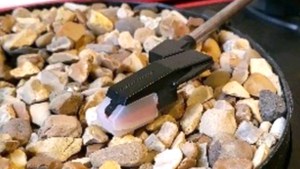Journey to the Microcosmos shared fascinating macro footage shot by James Weiss of tiny Cnidarians known as moerisia. Narrator Hank Green explains that these hydrozoan creatures take on two forms, one as asexual polyps that resemble a necklace and as a Medusa, which resembles a tiny jellyfish. While they are related to jellyfish, they are not the same. The Medusa is the second stage of a moerisia that sexually reproduces in order to provide variety into the gene pool. Green explains why these two stages exist.
Asexual reproduction is fast, and it helps polyps build their local populations quickly. The downside is that an asexual polyp means limiting both the scenery and the gene pool. …But by leading a second sexually reproductive life as a Medusa, the hydrozoan gets to disperse both physically and genetically. But there is a cost after all, sexual reproduction takes time and special organs and the hope that sperm will meet an egg. But that is why the hydrozoan doesn’t strictly rely on sexual reproduction either.






